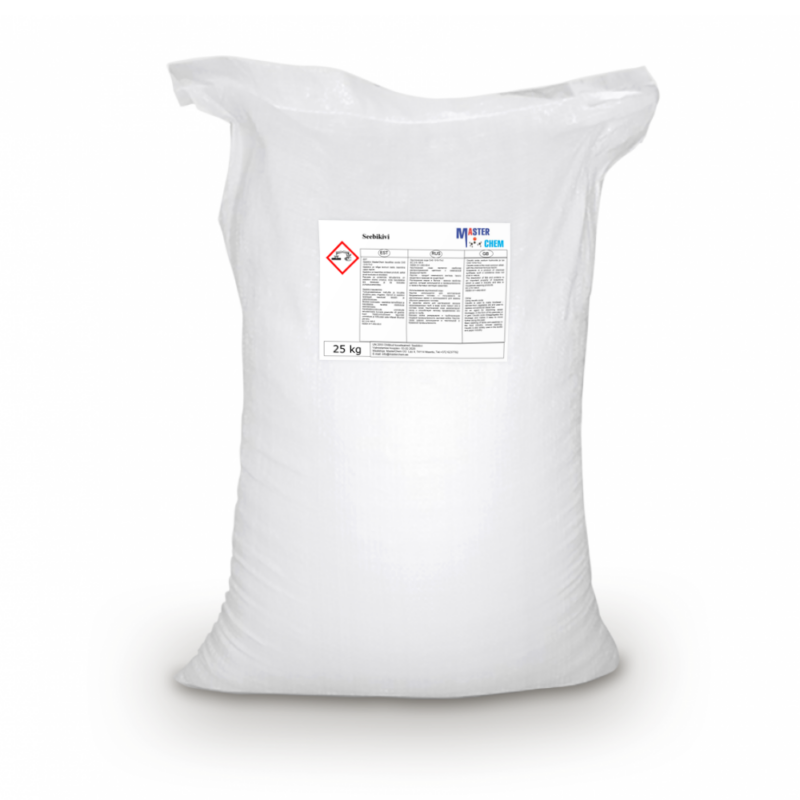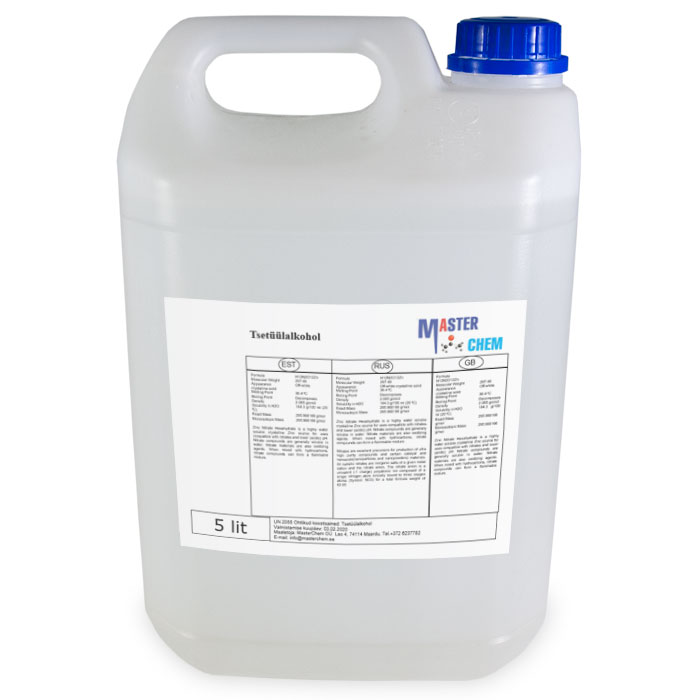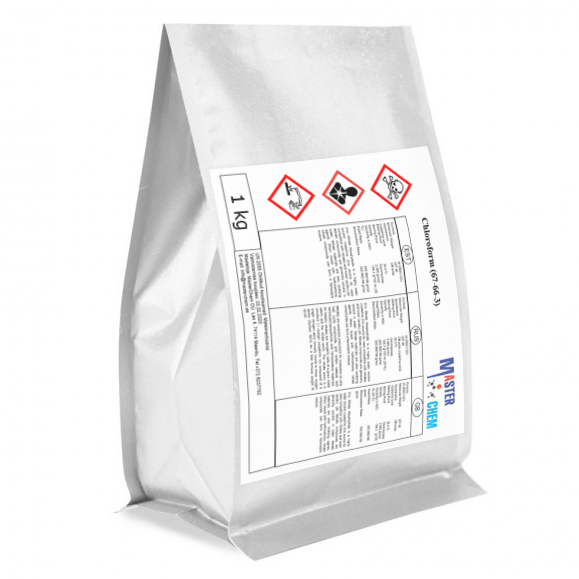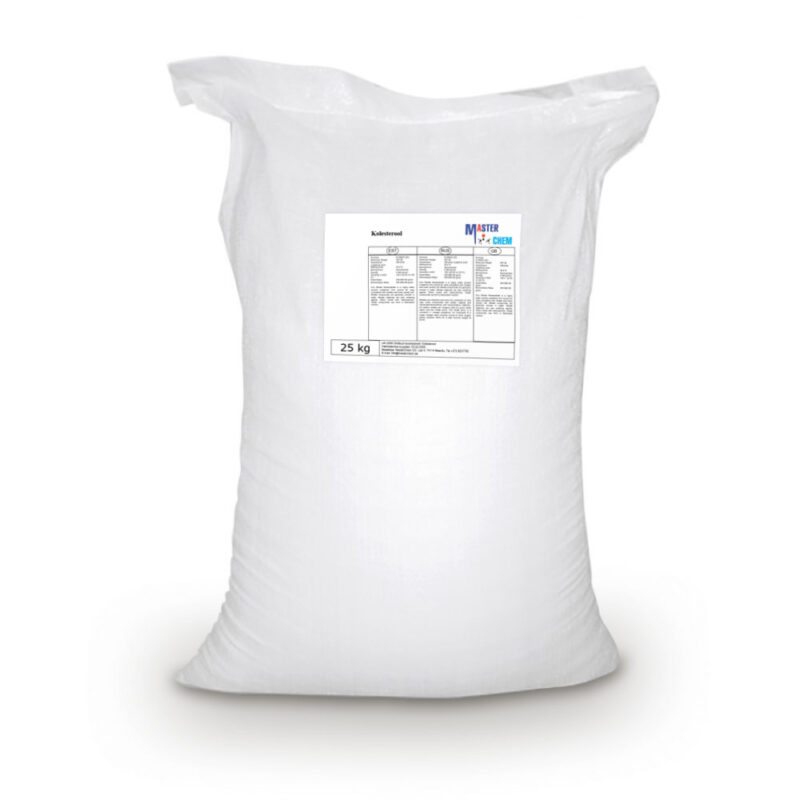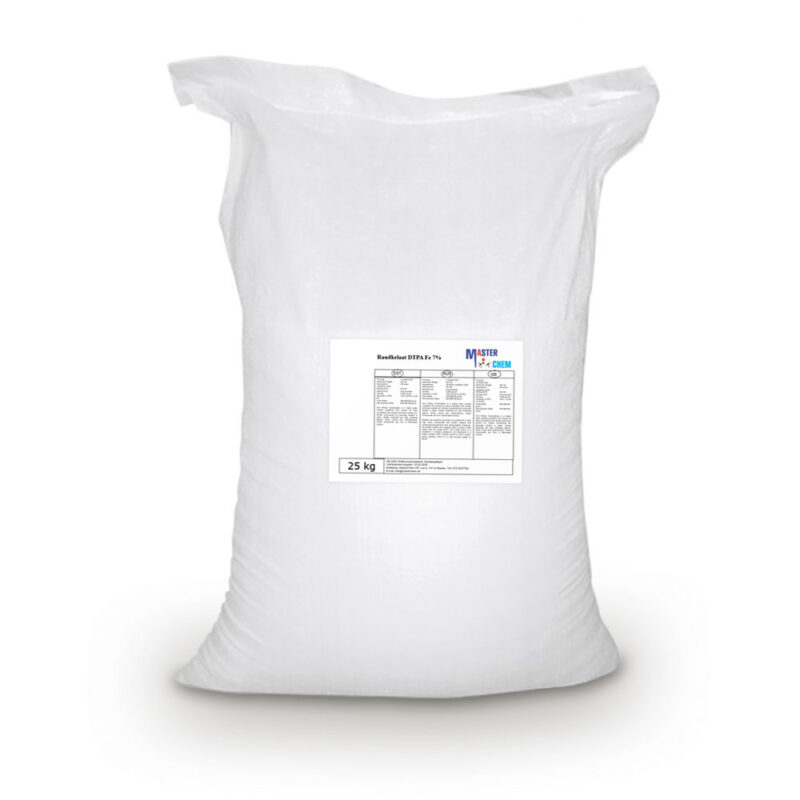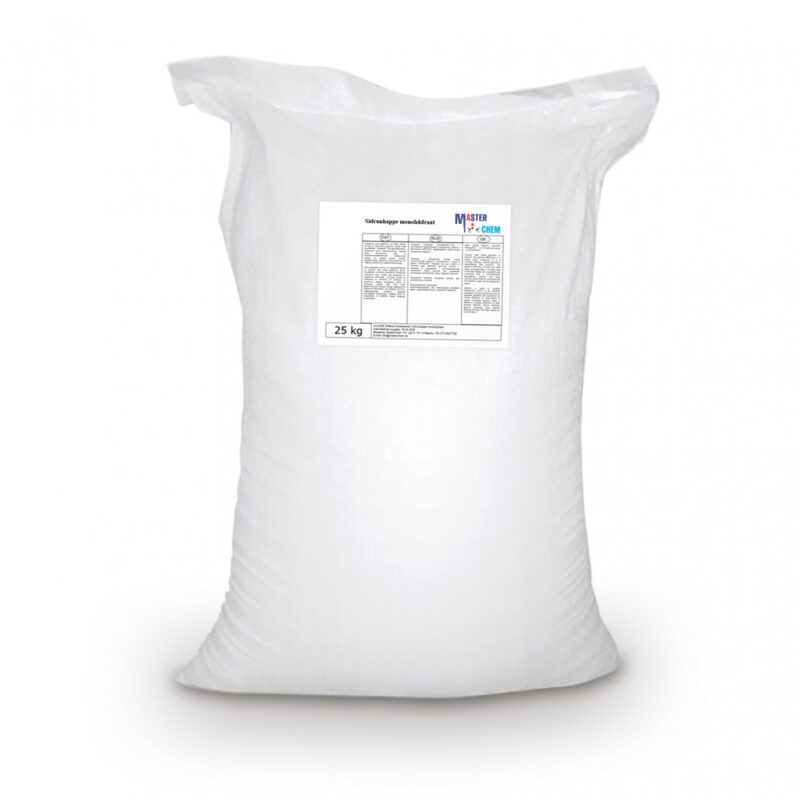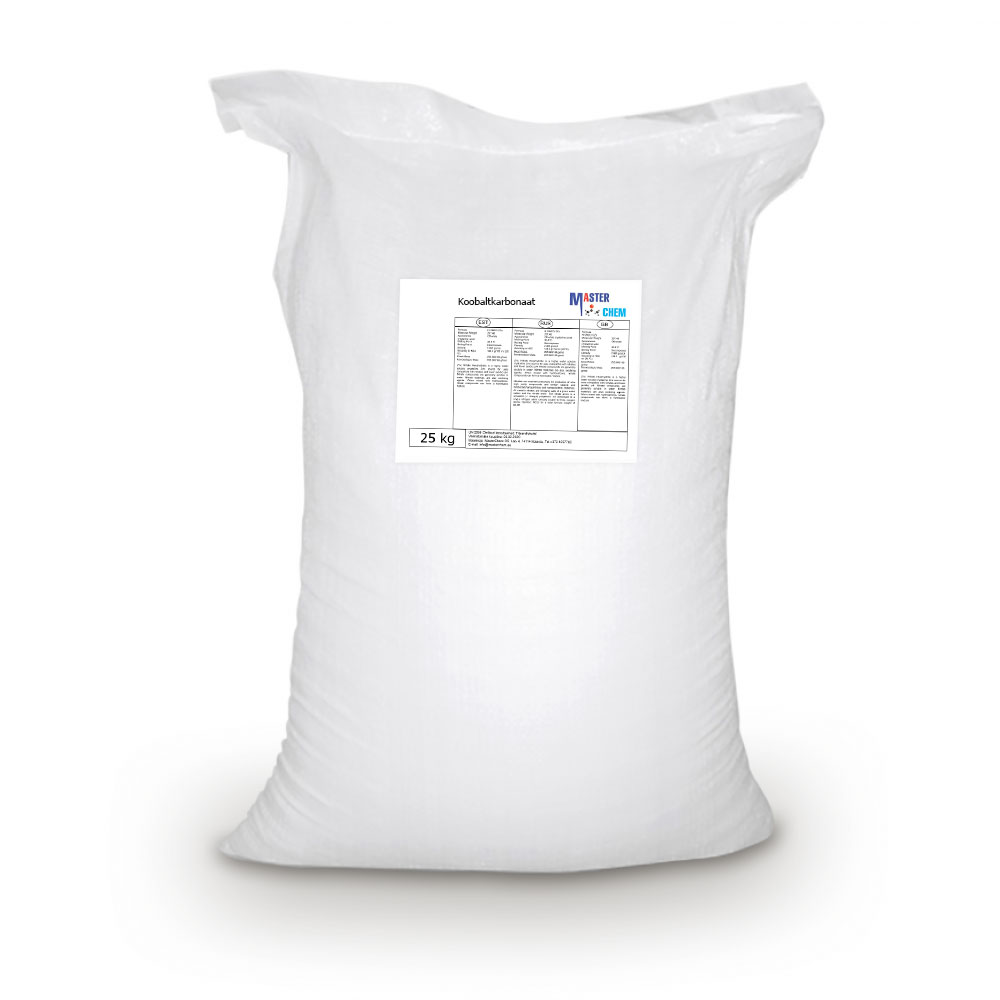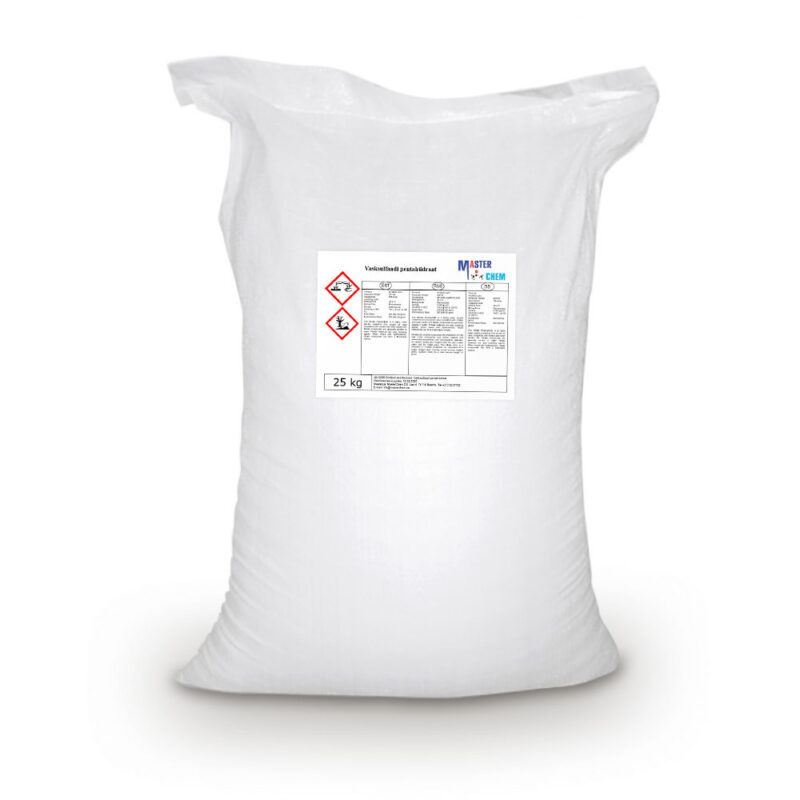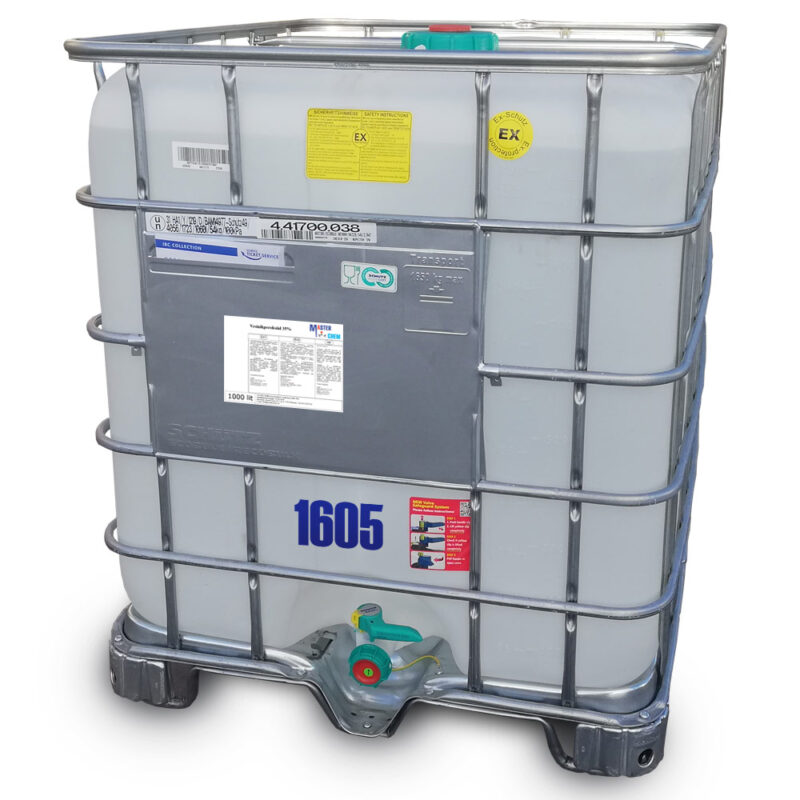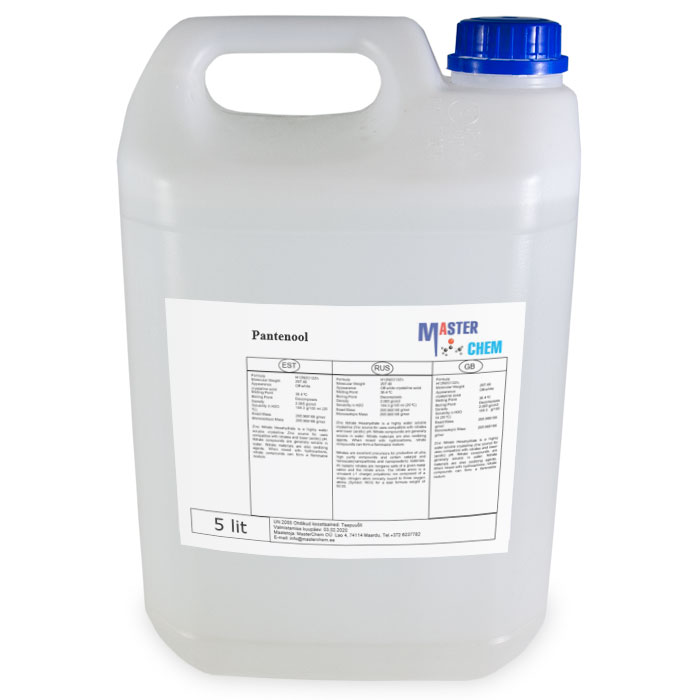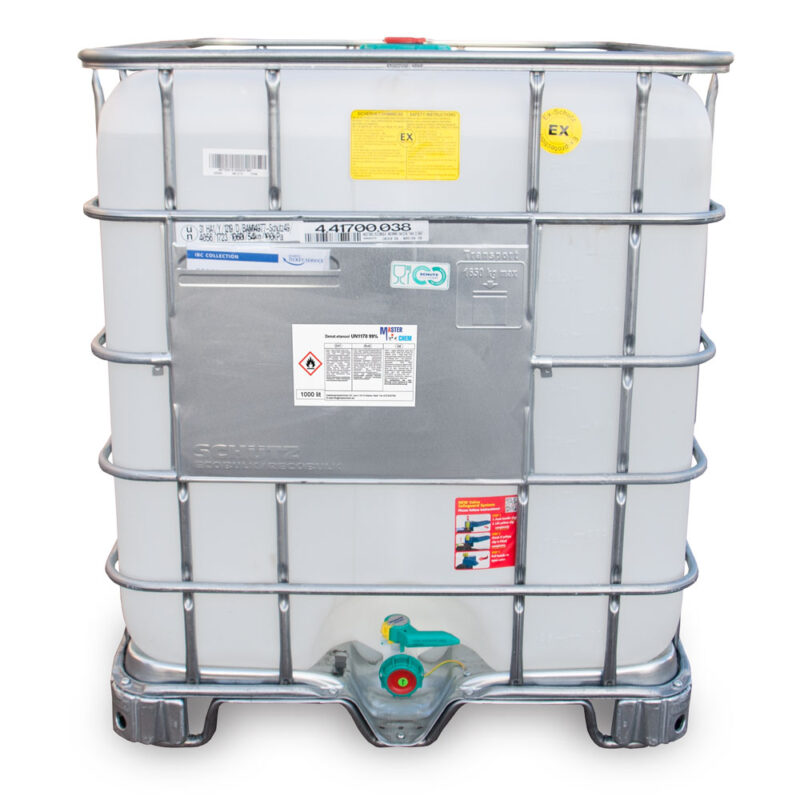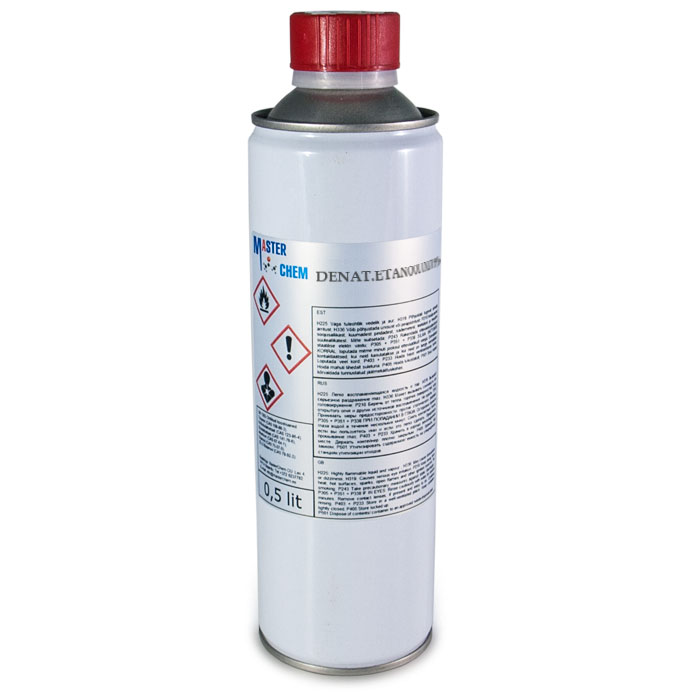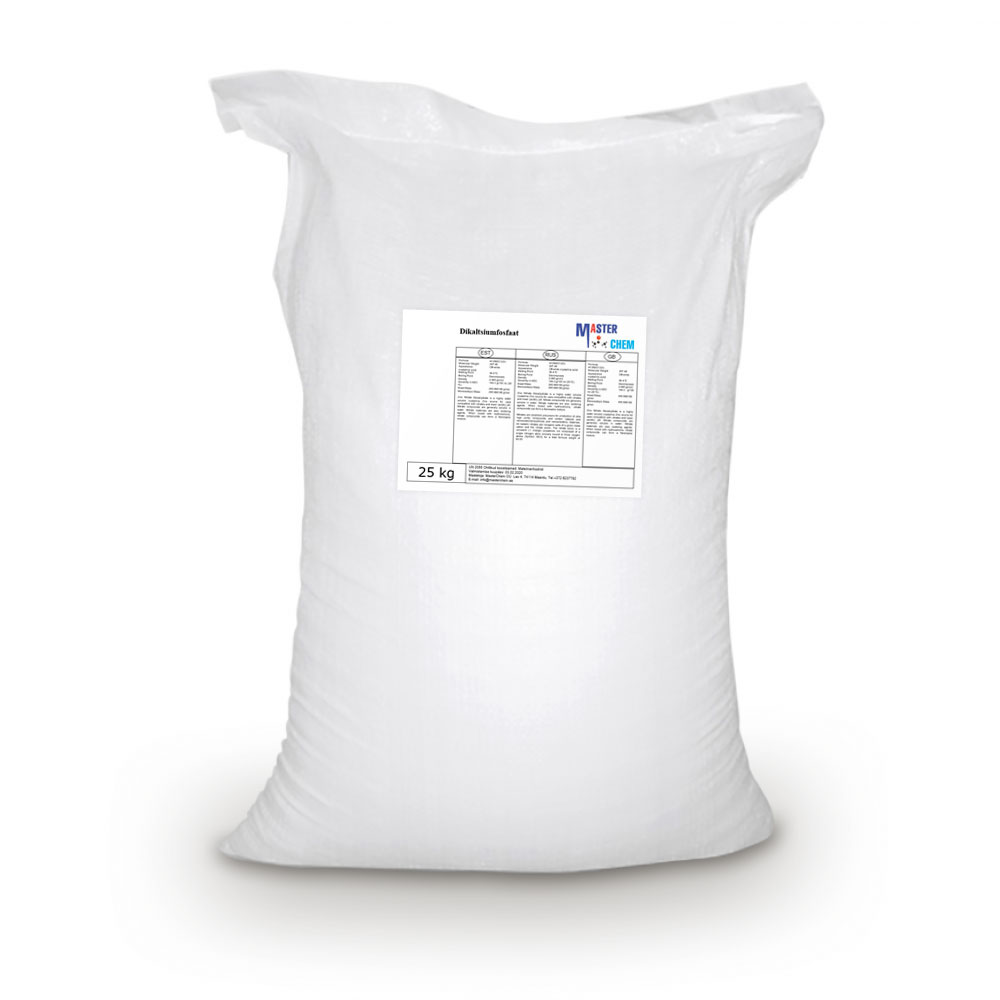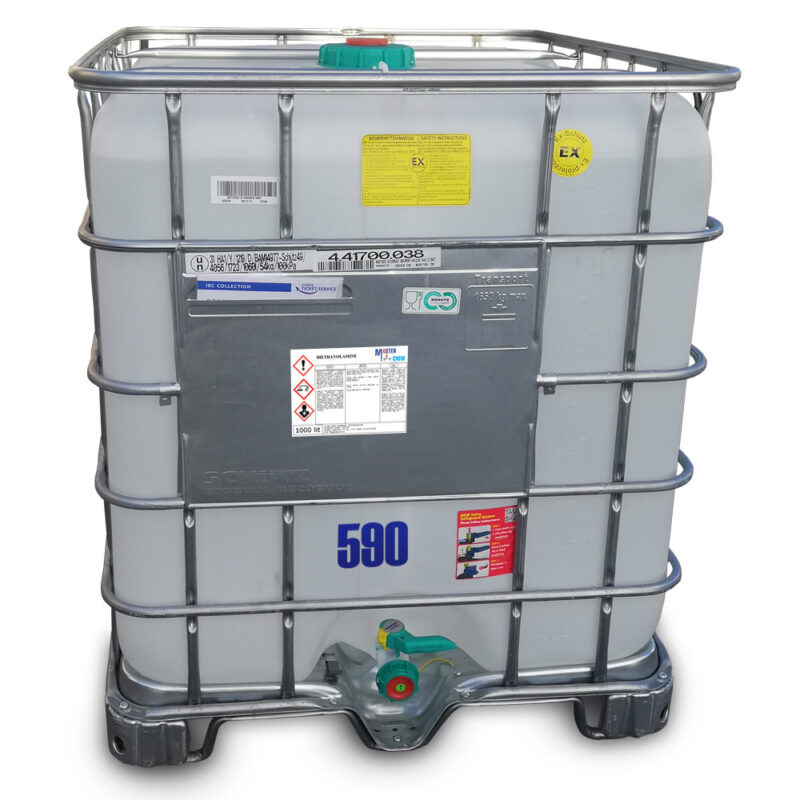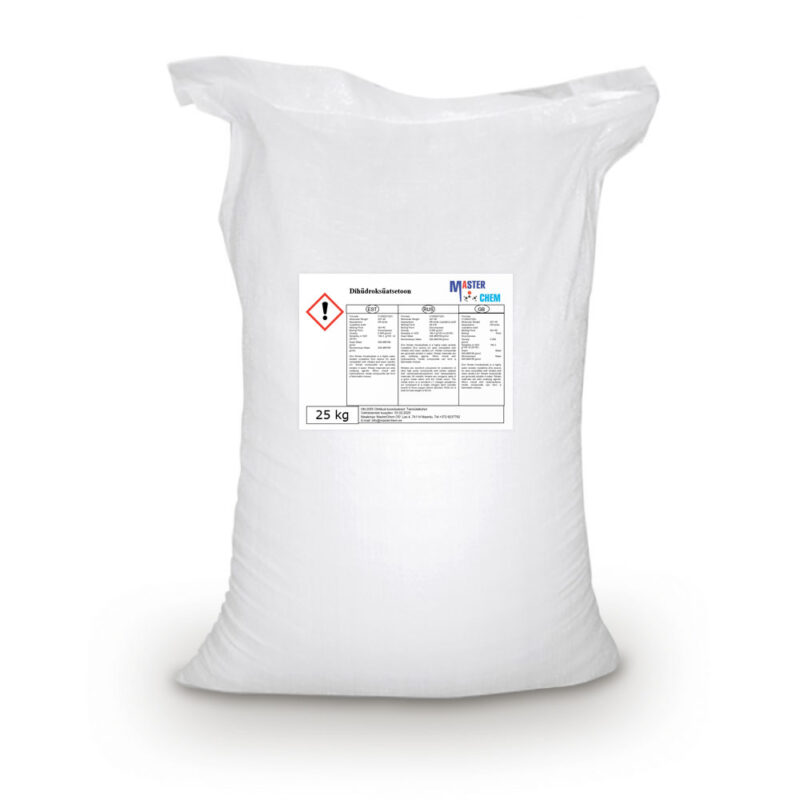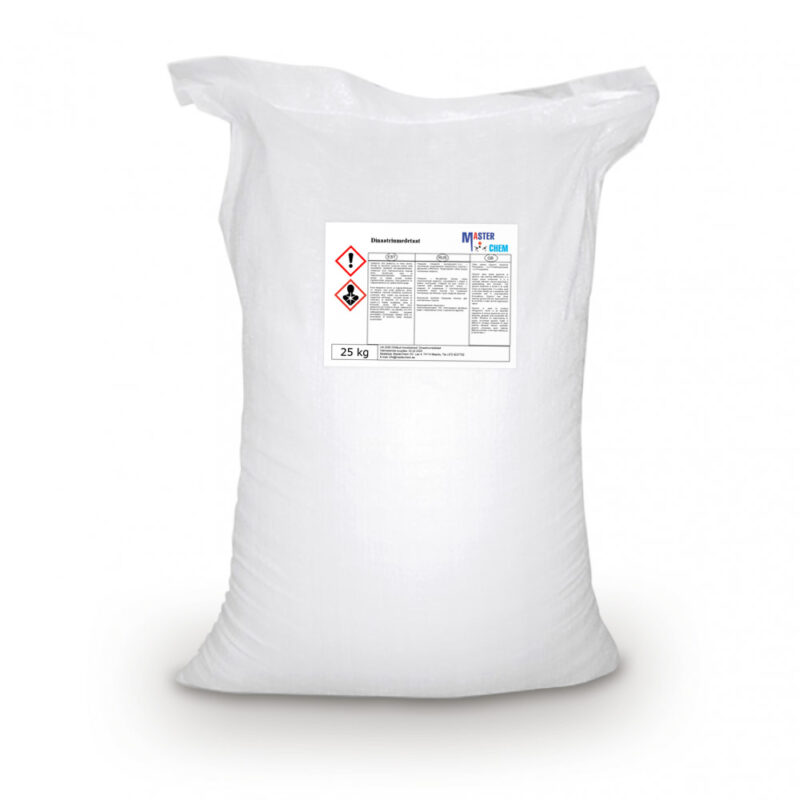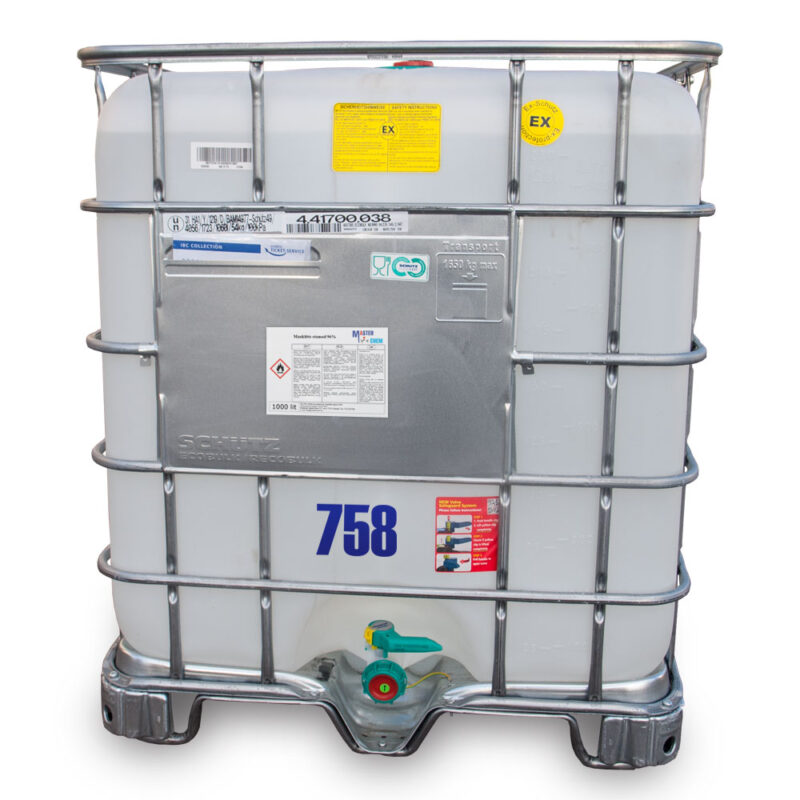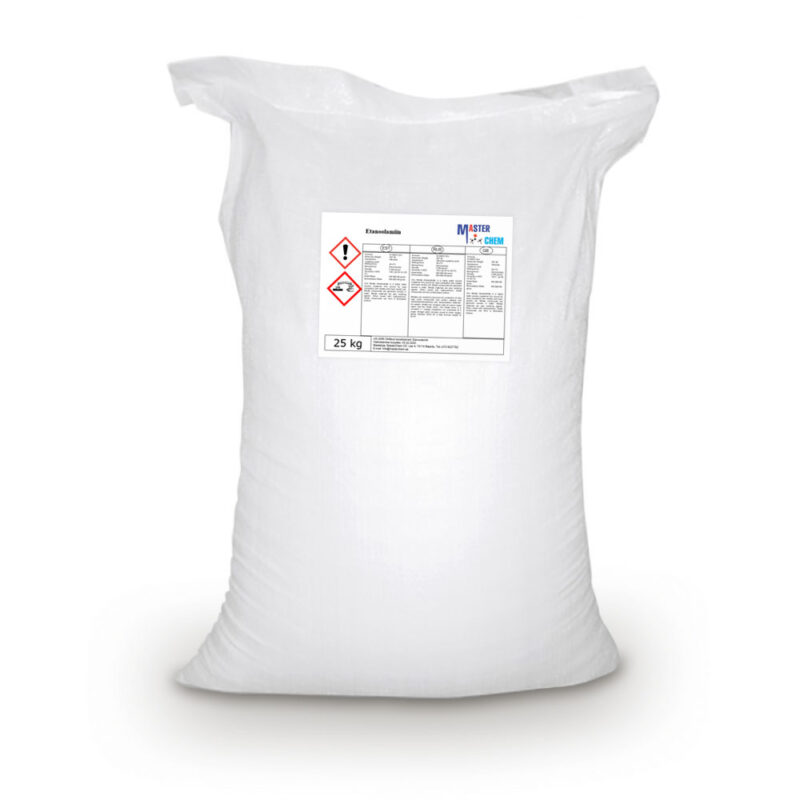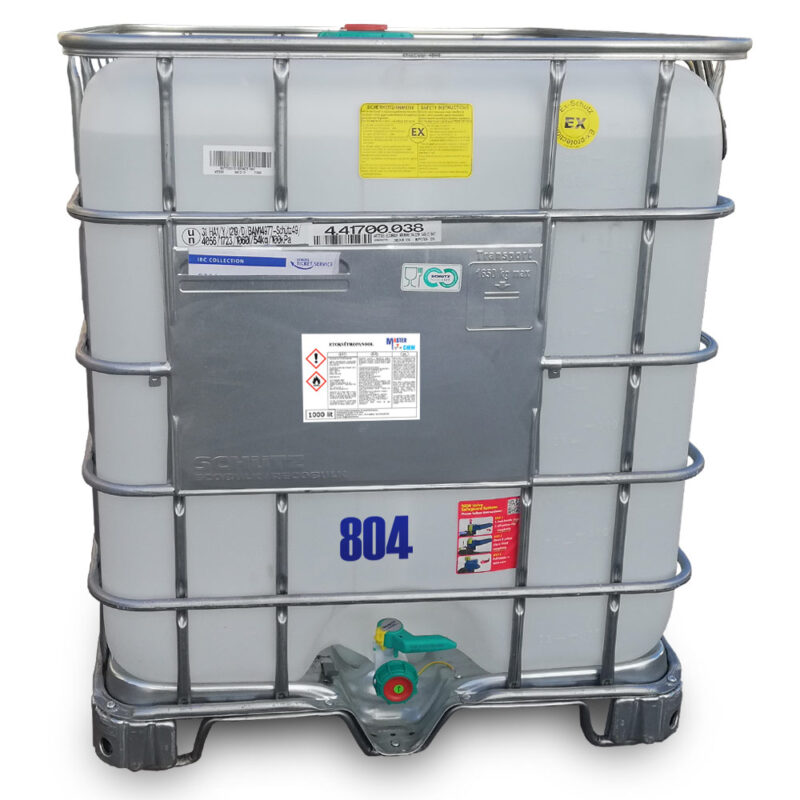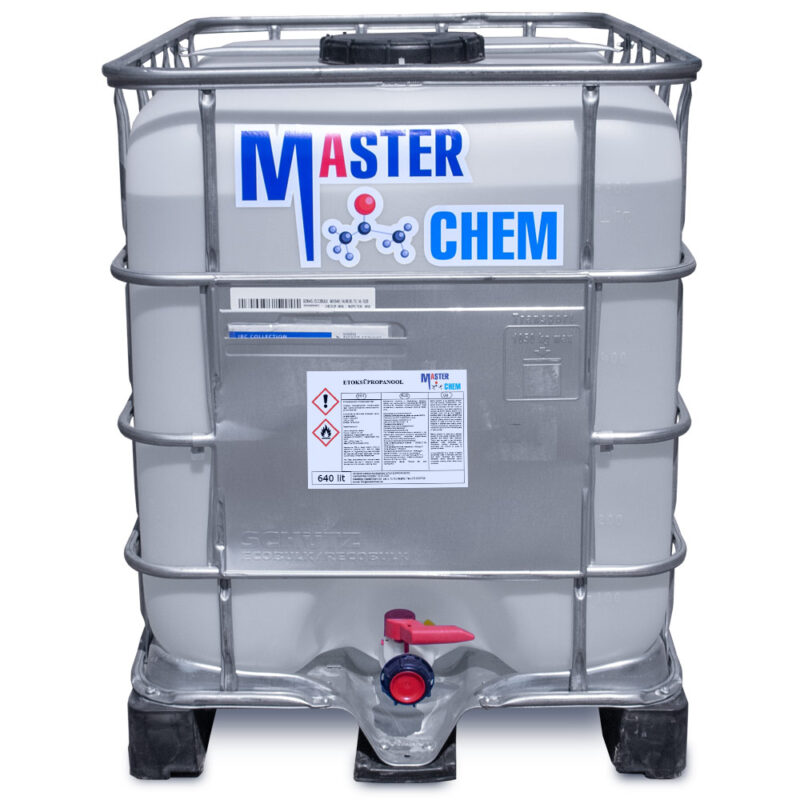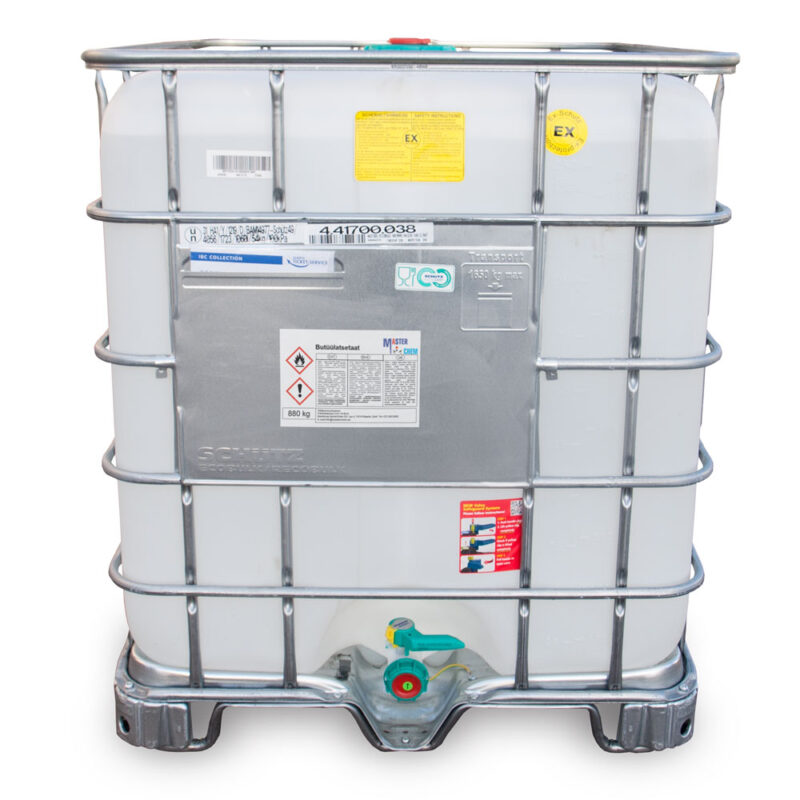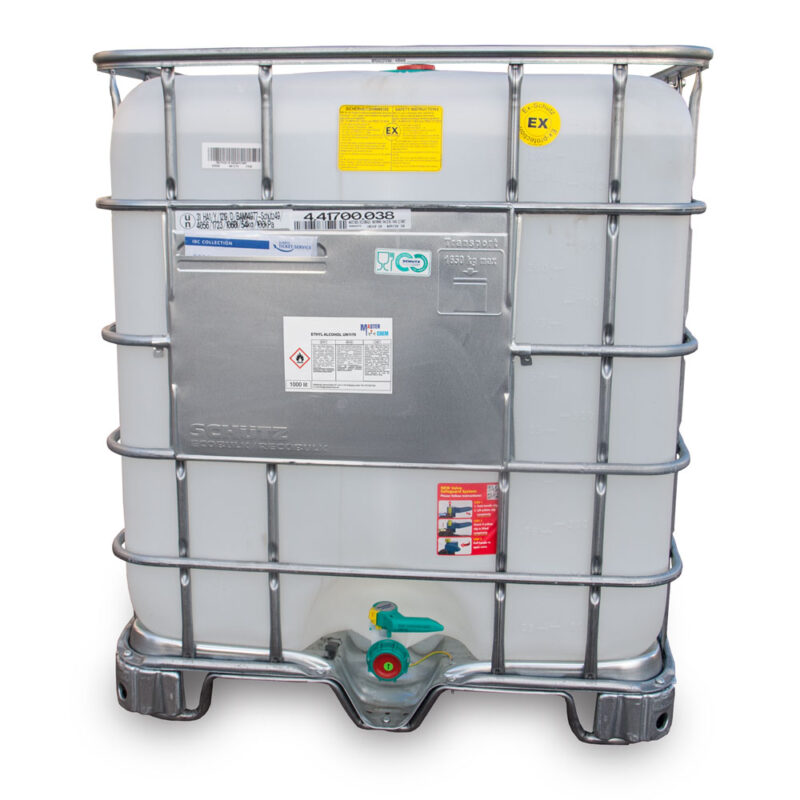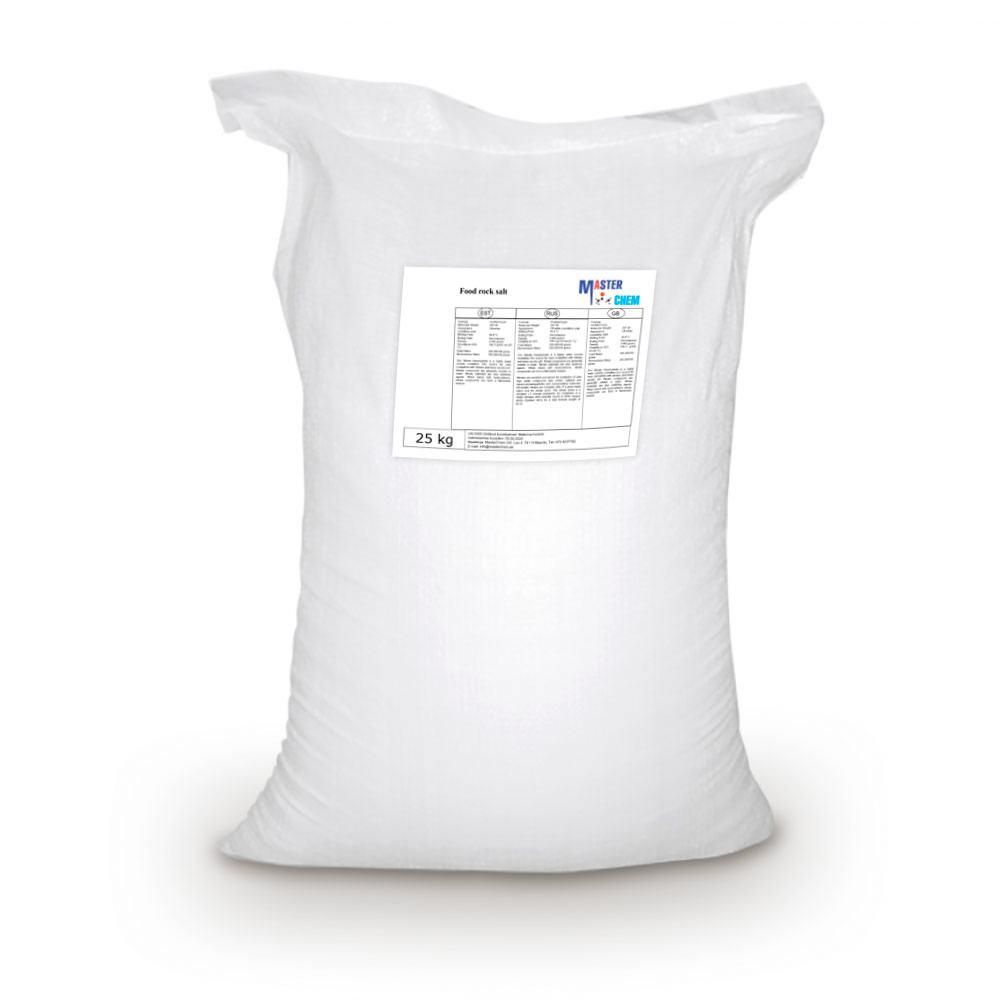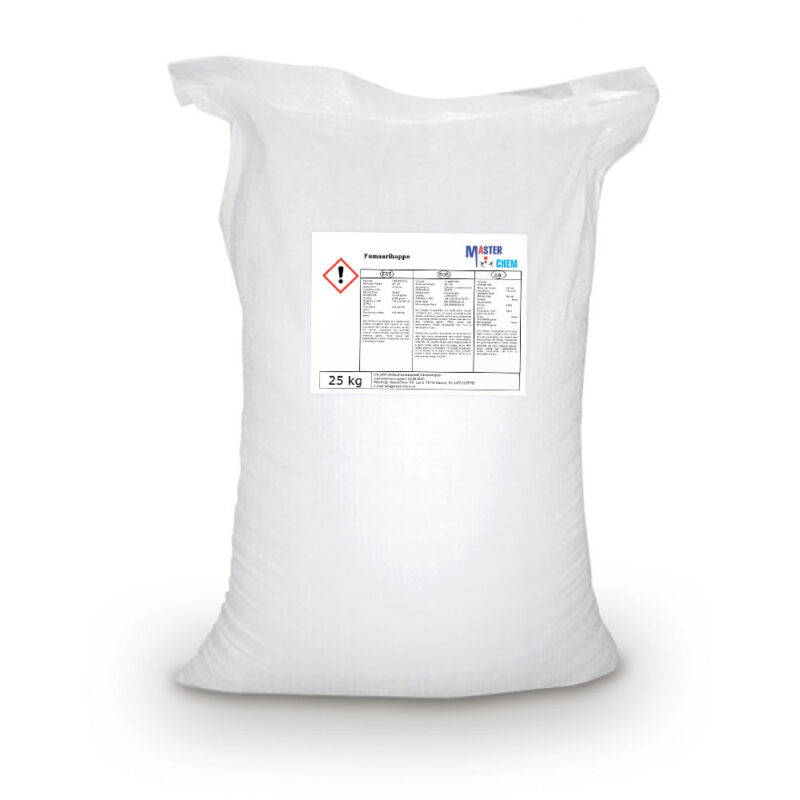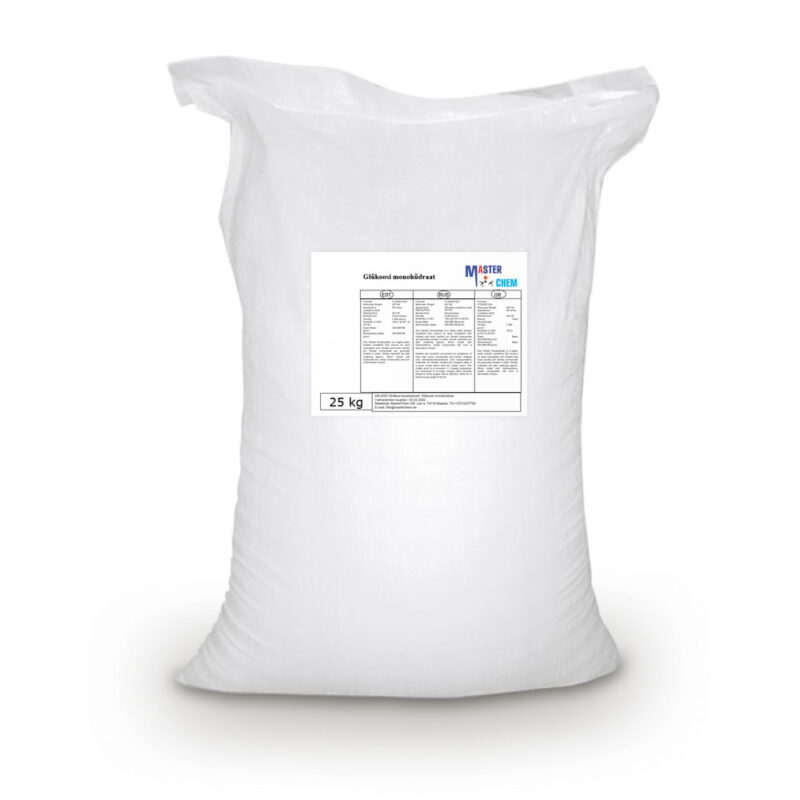Caustic soda (CAS 1310-73-2)
Caustic soda, sodium hydroxide ja lye CAS 1310-73-2
Caustic soda is the most common alkali, with the chemical formula NaOH.
Soapstone is a product of chemical synthesis, such a substance does not exist in nature.
The dissolution of fats and proteins is an important property of soapstone, which is used in industry and also in household cleaning products.
EC 215-185-5
INDEX 011-002-00-6
Cetyl alcohol (CAS 36653-82-4)
Cetyl alcohol (CAS 36653-82-4)
Cetyl alcohol, also known as hexadecan-1-ol and palmityl alcohol, is a C-16 fatty alcohol with the formula CH3(CH2)15OH. At room temperature, cetyl alcohol takes the form of a waxy white solid or flakes. The name cetyl derives from the whale oil (cetacea oil, from Latin: cetus, lit. ’whale’, from Ancient Greek: κῆτος, romanized: kētos, lit. ’huge fish’) from which it was first isolated.
Cetyl alcohol is used in the cosmetic industry as an opacifier in shampoos, or as an emollient, emulsifier or thickening agent in the manufacture of skin creams and lotions. It is also employed as a lubricant for nuts and bolts, and is the active ingredient in some “liquid pool covers” (forming a non-volatile surface layer to reduce water evaporation, related latent vaporization heat loss, and thus to retain heat in the pool). Moreover, it can also be used as a non-ionic co-surfactant in emulsion applications.
Chloroform (CAS 67-66-3)
Chloroform, or trichloromethane (often abbreviated as TCM), is an organic compound with the formula CHCl3 and a common solvent. It is a very volatile, colorless, strong-smelling, dense liquid produced on a large scale as a precursor to refrigerants and in turn, PTFE. Chloroform is a trihalomethane that serves as a powerful anesthetic, euphoriant, anxiolytic, and sedative when inhaled or ingested. Chloroform was used as an anesthetic between the 19th century and the first half of the 20th century. It is miscible with many solvents but it is only very slightly soluble in water (only 8 g/L at 20 °C).
Cholesterol (CAS 57-88-5)
Cholesterol (CAS 57-88-5)
Cholesterol (from the Ancient Greek chole- (bile) and stereos (solid), followed by the chemical suffix -ol for an alcohol) is an organic molecule. It is a sterol (or modified steroid), a type of lipid. Cholesterol is biosynthesized by all animal cells and is an essential structural component of animal cell membranes. It is a yellowish crystalline solid.
Cholesterol also serves as a precursor for the biosynthesis of steroid hormones, bile acid and vitamin D. Cholesterol is the principal sterol synthesized by all animals. In vertebrates, hepatic cells typically produce the greatest amounts. It is absent among prokaryotes (bacteria and archaea), although there are some exceptions, such as Mycoplasma, which require cholesterol for growth.
François Poulletier de la Salle first identified cholesterol in solid form in gallstones in 1769. However, it was not until 1815 that chemist Michel Eugène Chevreul named the compound “cholesterine”.
Citric acid (CAS 77-92-9)
Citric acid is a weak organic acid that has the chemical formula C6H8O7
It occurs naturally in citrus fruits. In biochemistry, it is an intermediate in the citric acid cycle, which occurs in the metabolism of all aerobic organisms.More than two million tons of citric acid are manufactured every year. It is used widely as an acidifier, as a flavoring and a chelating agent.
CAS: 77-92-9
Citric Acid Monohydrate (CAS 5949-29-1)
Citric Acid Monohydrate (CAS 5949-29-1)
Citric Acid Monohydrate is a tricarboxylic acid found in citrus fruits. Citric acid is used as an excipient in pharmaceutical preparations due to its antioxidant properties. It maintains stability of active ingredients and is used as a preservative. It is also used as an acidulant to control pH and acts as an anticoagulant by chelating calcium in blood.
Cobalt carbonate
Cobalt carbonate
Cobalt carbonate (CoCO3) is an ionic compound formed by cobalt and carbonate ions. In appearance, the compound is a pink crystalline substance that does not dissolve in water, but acids dissolve it. In nature, cobalt carbonate is found as spherocobaltite ore.
Copper Sulphate Pentahydrate (CAS 7758-99-8)
Copper Sulphate Pentahydrate (CAS 7758-99-8)
Copper(II) sulfate, also known as copper sulphate, are the inorganic compounds with the chemical formula CuSO4(H2O)x, where x can range from 0 to 5. The pentahydrate (x = 5) is the most common form. Older names for this compound include blue vitriol, bluestone, vitriol of copper, and Roman vitriol.
The pentahydrate (CuSO4·5H2O), the most commonly encountered salt, is bright blue. It exothermically dissolves in water to give the aquo complex [Cu(H2O)6]2+, which has octahedral molecular geometry. The structure of the solid pentahydrate reveals a polymeric structure wherein copper is again octahedral but bound to four water ligands. The Cu(II)(H2O)4 centers are interconnected by sulfate anions to form chains. Anhydrous copper sulfate is a light grey powder.
D-Panthenol (CAS 81-13-0)
D-Panthenol (CAS 81-13-0)
Panthenol (also called pantothenol) is the alcohol analog of pantothenic acid (vitamin B5), and is thus a provitamin of B5. In organisms, it is quickly oxidized to pantothenic acid. It is a viscous transparent liquid at room temperature. Panthenol is used in pharmaceutical and cosmetic products as a moisturizer and to improve wound healing.
Panthenol is an odourless, slightly bitter, highly viscous, transparent, and colourless liquid at room temperature, but salts of pantothenic acid (for example sodium pantothenate) are powders that are typically white. It is easily soluble in water and alcohol, moderately soluble in diethyl ether, soluble in chloroform (1:100), in propylene glycol, and slightly soluble in glycerin.
Denatured spirit (CAS 64-17-5)
Denatured Alcohol or ethanol or ethyl alcohol (also alcohol) or methylcarbinol (of the formula CH 3 CH 2 OH) is the best known alcohol. It is a colorless liquid under normal conditions. We offer only denatured spirits.
CAS: 64-17-5
Dicalcium Phosphate (CAS 7757-93-9)
Dicalcium Phosphate (CAS 7757-93-9)
Dicalcium phosphate is the calcium phosphate with the formula CaHPO4 and its dihydrate. The “di” prefix in the common name arises because the formation of the HPO42– anion involves the removal of two protons from phosphoric acid, H3PO4. It is also known as dibasic calcium phosphate or calcium monohydrogen phosphate. Dicalcium phosphate is used as a food additive, it is found in some toothpastes as a polishing agent and is a biomaterial.
Dibasic calcium phosphate is mainly used as a dietary supplement in prepared breakfast cereals, dog treats, enriched flour, and noodle products. It is also used as a tableting agent in some pharmaceutical preparations, including some products meant to eliminate body odor. Dibasic calcium phosphate is also found in some dietary calcium supplements (e.g. Bonexcin). It is used in poultry feed. It is also used in some toothpastes as a tartar control agent.
Diethanolamine (CAS 111-42-2)
Other names: Bis(hydroxyethyl)amine, N,N-Bis(2-hydroxyethyl)amine, 2,2′-Dihydroxydiethylamine, β,β’-Dihydroxydiethylamine, Diolamine, 2-[(2-Hydroxyethyl)amino]ethanol, 2,2′-Iminobisethanol, Iminodiethanol, Di(2-hydroxyethyl)amine, bis(2-Hydroxyethyl)amine, 2,2′-Iminodiethanol
DEA is used as a surfactant and a corrosion inhibitor. It is used to remove hydrogen sulfide and carbon dioxide from natural gas.
In oil refineries, a DEA in water solution is commonly used to remove hydrogen sulfide from sour gas. It has an advantage over a similar amine ethanolamine in that a higher concentration may be used for the same corrosion potential. This allows refiners to scrub hydrogen sulfide at a lower circulating amine rate with less overall energy usage.
DEA is a chemical feedstock used in the production of morpholine.
CAS 111-42-2
Dihydroxyacetone (CAS 96-26-4)
Dihydroxyacetone (CAS 96-26-4)
Dihydroxyacetone, also known as glycerone, is a simple saccharide (a triose) with formula C3H6O3.
DHA is primarily used as an ingredient in sunless tanning products. It is often derived from plant sources such as sugar beets and sugar cane, and by the fermentation of glycerin.
DHA is a hygroscopic white crystalline powder. It has a sweet cooling taste and a characteristic odor. It is the simplest of all ketoses and has no chiral center or optical activity. The normal form is a dimer (2,5-bis(hydroxymethyl)-1,4-dioxane-2,5-diol) which is slowly soluble in one part water and 15 parts ethanol. When freshly prepared, it reverts rapidly to the monomer in solution.
Dipropylene glycol (CAS 110-98-5)
Other names: Dipropylene glycol, 4-Oxa-1,6-hexandiol, 1,1′-Oxybis(1-propanol), 1,1′-Oxybis(2-propanol)
Dipropylene glycol is a mixture of three isomeric chemical compounds, 4-oxa-2,6-heptandiol, 2-(2-hydroxy-propoxy)-propan-1-ol, and 2-(2-hydroxy-1-methyl-ethoxy)-propan-1-ol. It is a colorless, nearly odorless liquid with a high boiling point and low toxicity.
CAS 110-98-5
Disodium edetate (CAS 6381-92-6)
Disodium edetate (CAS 6381-92-6)
Edetate Disodium is the disodium salt form of edetate, a heavy metal chelating agent with anti-hypercalcemic and anti-arrhythmic properties. Edetate, a heavy metal antagonist, chelates divalent and trivalent metals, forming soluble stable complexes which are readily excreted by the kidneys, thereby can be used to lower serum calcium concentrations. In addition, this agent exerts a negative inotropic effect on the heart through a transiently induced hypocalcemic state, thereby antagonizing the inotropic and chronotropic effects of digitalis glycosides on the ventricles of the heart. Upon ocular administration, edetate exerts its ophthalmic effect by chelating calcium to form soluble complexes, thereby removing corneal calcium deposits.
Dl-Methionine (CAS 59-51-8)
Dl-Methionine (CAS 59-51-8)
DL-Methionine is an essential amino acid containing sulphur. Methionine consists of an asymmetric carbon and exists as D (dextrogyre) and L (levogyre) optical isomers. The L-methionine is considered as biologically active. The racemic mixture of D and L-isomers forms DL-methionine, which is the commercially available methionine.
DL-Methionine has been used to study its effect on the growth and feed utilization of Nile tilapia. It has also been used as a part of standard diet in animal models.
Ester-aldehyde fraction EAF 88%
Raw solution of heat pump heat collection fluid. Used as a heat collection fluid for heat wells or horizontal heat collection pipelines. The liquid is an 88% raw solution of nature-friendly ethanol that MasterChem offers to customers with a corrosion inhibitor mixture (……) or without (……).
Nestee consists of: Technical data sheet
Ethanol is used not only in heat transfer fluids and alcoholic beverages, but also in the cleaning of printing machines, in the paint and varnish industry for the production of stains and dyes, and in the cleaning of equipment.
Water is added to the raw liquid in the ratio of 37% (raw solution): 63% (water) in order to obtain a dilution suitable for the soil.
Ethanolamine (CAS 141-43-5)
Ethanolamine (CAS 141-43-5)
Ethanolamine (2-aminoethanol, monoethanolamine, ETA, or MEA) is an organic chemical compound with the formula HOCH2CH2NH2 (C2H7NO). The molecule is bifunctional, containing both a primary amine and a primary alcohol. Ethanolamine is a colorless, viscous liquid with an odor reminiscent of ammonia. Its derivatives are widespread in nature; e.g., lipids, as precursor of a variety of N-acylethanolamines (NAEs), that modulate several animal and plant physiological processes such as seed germination, plant–pathogen interactions, chloroplast development and flowering, as well as precursor, combined with arachidonic acid (C20H32O2; 20:4, ω-6), to form the endocannabinoid anandamide (AEA: C22H37NO2; 20:4, ω-6).
The ethanolamines comprise a group of amino alcohols. A class of antihistamines is identified as ethanolamines, which includes carbinoxamine, clemastine, dimenhydrinate, Chlorphenoxamine, diphenhydramine and doxylamine.
Ethoxypropanol (CAS 1569-02-4)
Ethoxypropanol (CAS 1569-02-4)
Ethoxy Propanol (also known as propylene glycol ether; Arcosolv PE; ethyl proxitol; and propylene glycol monoethyl ether) is a clear liquid that has a characteristic ether-like odour. It has the formula C5H12O2 and it is miscible with water, is hygroscopic, and it also provides good solvency for a wide variety of substances, including resins, inks, and adhesives.
CAS: 1569-02-4
Ethyl acetate (CAS 141-78-6)
Other names: Ethyl acetate, ethyl ethanoate
Description:
Ethyl acetate is an ethyl etheric acid in the form of a combustible colorless volatile liquid substance with a sharp smell of fruit. There are no mechanical impurities. It is a moderately polar solvent product with the properties of esters. The solution is supplied in methylcarbinol, ethyl ether, benzene, methylene chloride, methylbenzene and some other organic solvents. In water, the dissolution is weaker. Ethyl acetate has a solvent effect on cellulose esters, oil-based resin lacquers, fats and waxes.
Production on an industrial scale occurs during the reaction of ethanol and acetic acid. It is also possible to process ethanol with carbomethylene or synthesize it from acetic aldehyde in the presence of an aluminum alkoxide catalyst.
CAS 141-78-6
Ethyl alcohol (denaturated) (CAS 64-17-5)
Application and use:
Ethyl alcohol is used in:
– Pharmacy as an external antiseptic for the disinfection of hands and surgical instruments
– perfumes for the production of cosmetics, as the main component of aerosols, perfumes, colognes, and is also part of such cosmetics as shampoos, shower gels, toothpastes
– In auto repair shops, this liquid is used for degreasing a metal surface, for painting a body, cleaning aggregates (ethyl alcohol EA8099)
– for domestic needs, it is space heating, cooking, detergent and a hand sanitizer (for example ethyl alcohol EA8099), to clean the surface of grease and oils
– c, non-freezing fluid in the heating systems of earthen loops, we have presented products with different freezing temperatures and different packaging
– the chemical industry is a solvent, it is used as a raw material for the production of certain chemicals, a component in the production of glass cleaning liquids for automobiles (we have products with different freezing temperatures and different packaging).
– in the printing industry as a solvent for washing equipment. We offer both a pure product (ethyl alcohol EA8099) and as a mixture where 90% ethanol and 10% ethyl acetate is a solvent product EE-9010.
– in the paint and varnish industry is used for the production of stains, dyes,
solvents for flushing equipment.
– in the glass industry for degreasing surfaces
– in the leather industry, this is an essential element in tanning leather
– in electronics: in the manufacture of microcircuits, as a necessary substance for the maintenance of equipment (for example, for cleaning it).
Tip: Store the product at a temperature between 0 °C and 35 °C and do not expose it to direct sunlight.
Properties:
Density: at 20 degrees C – 0.78 g/cm3 +-0.01
Color – colorless liquid
Food rock salt
Tavakasutuses on sool mineraal, mis koosneb peamiselt naatriumkloriidist (NaCl). Toidus kasutamisel, eriti granuleeritud kujul, nimetatakse seda ametlikumalt lauasoolaks. Loodusliku kristallilise mineraali kujul on sool tuntud ka kivisoola või haliidina.
Fumaric Acid (CAS 110-17-8)
Fumaric Acid (CAS 110-17-8)
Fumaric acid is an organic compound with the formula HO2CCH=CHCO2H. A white solid, fumaric acid occurs widely in nature. It has a fruit-like taste and has been used as a food additive. Its E number is E297. The salts and esters are known as fumarates. Fumarate can also refer to the C4H2O2−4 ion (in solution). Fumaric acid is the trans isomer of butenedioic acid, while maleic acid is the cis isomer.
Glucose Monohydrate (CAS 5996-10-1)
Glucose Monohydrate (CAS 5996-10-1)
Information Industries: Pharmaceutical industry, Food industry , Feed industry CAS number: 5996-10-1 WE number: 200-075-1 Chemical formula: C6H12O6·H2O Molar mass: …

